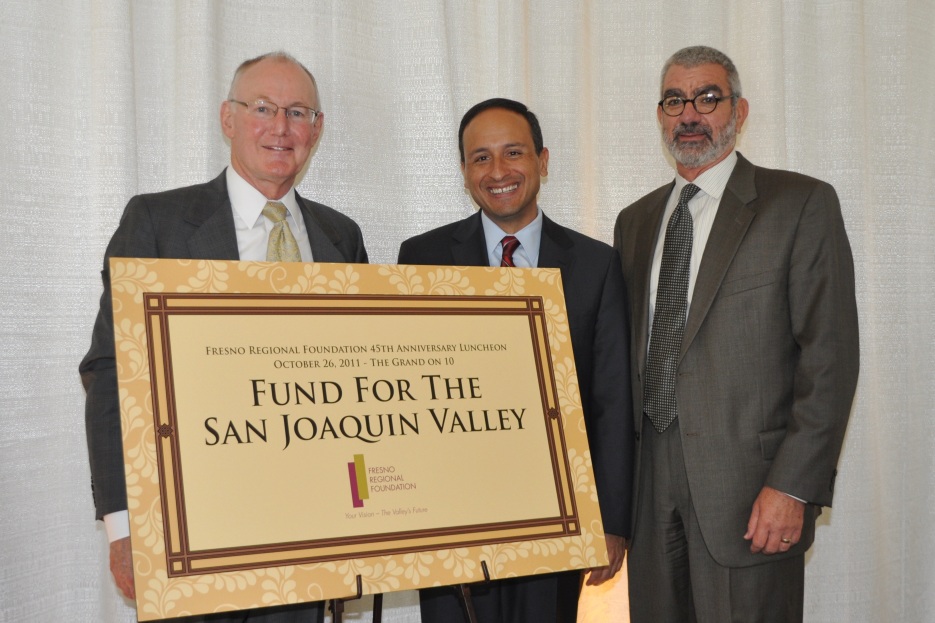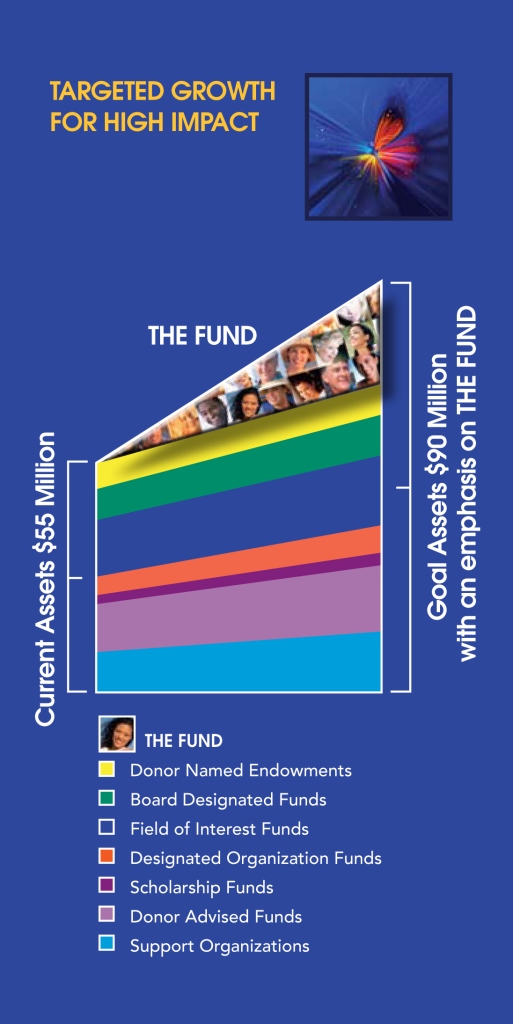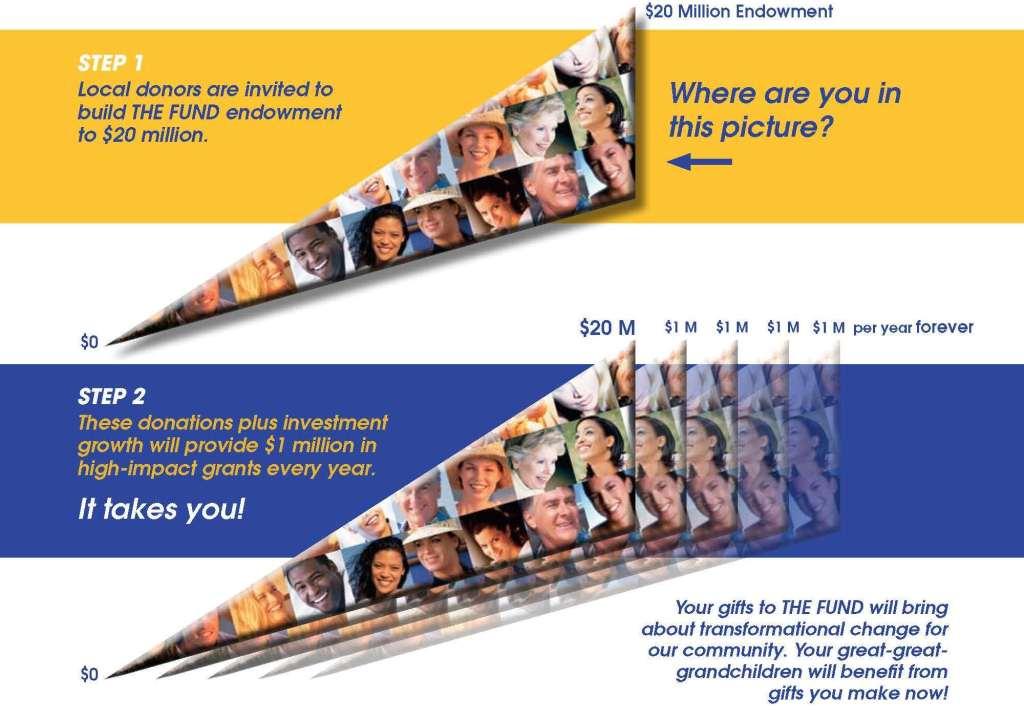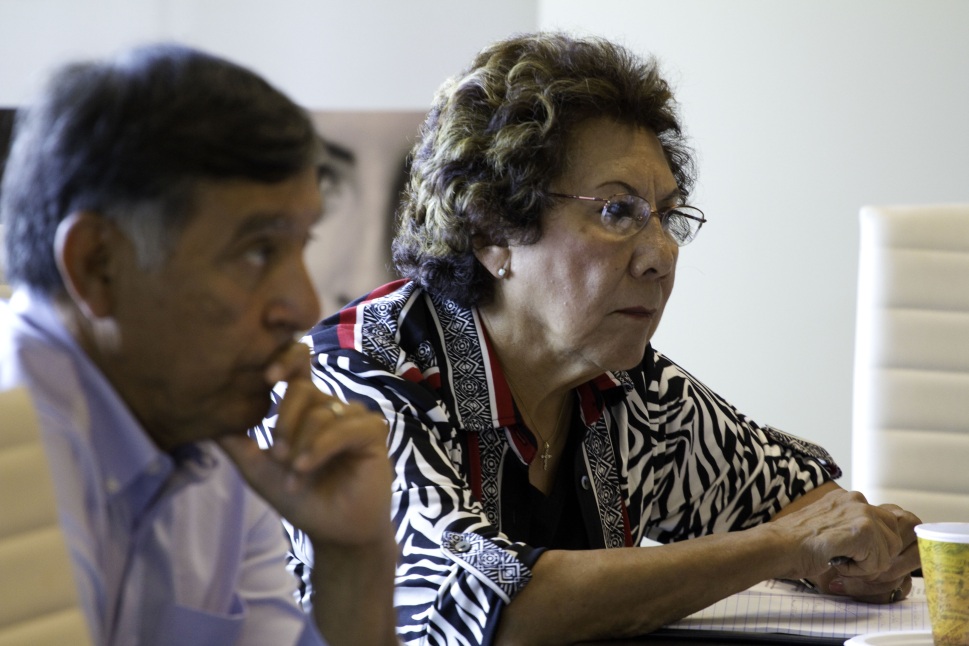High Impact Grant Cycle Return to Grants Page
Please note: Interested applicants must attend the information session or participate in a webinar; no exceptions will be made (see Important Dates to the right).
Applicants may then contact Program Staff with any additional questions before submitting an LOI. The LOI template will be made available during the information sessions and will be posted online after the final information session.
 FRF Letter of Interest 2014 High Impact Accelerator (79 KB)
FRF Letter of Interest 2014 High Impact Accelerator (79 KB)
2014 High Impact Grant Cycle
Helping Children Succeed | The Pathway Out of Poverty
Too many children in the San Joaquin Valley are growing up in poverty. In Fresno County alone, the poverty rate among school-aged children jumped from 27 percent in 2007 to 36 percent in 2010 – the highest in the state. Children in poverty face a host of disadvantages that, over time, become nearly insurmountable.
The future of the San Joaquin Valley depends on all children having a viable and permanent pathway out of poverty. Research shows that a critical leverage period in a young person’s life is in the years leading up to and through the 3rd grade. The need is even more urgent for children who are living in poverty; they face worse outcomes on nearly every measurement. Currently, 66 percent of Valley children are not reading proficiently by the end of 3rd grade. Children who are prepared to succeed in school by the end of the 3rd grade are significantly more likely to have a life of opportunity.
Why is the 3rd grade such an important milestone? After 3rd grade, a child must transition from learning to read, to reading to learn. The 4th grade curriculum assumes children can read and expects children to use this skill to solve more complex problems. Children who meet benchmarks by the end of 3rd grade are much more likely to graduate from high school on time, attend college, and obtain higher-wage jobs.
Multiple social determinants affect a child's ability to become literate by the 3rd grade.
For example, children need:
- Families who have sufficient income for decent housing, food, health and dental care, and books.
- Parents who know how to support their children’s learning in and out of school, and who are able to embrace their role as a child's first teacher.
- Adequate family resources to support children to be at school on time, every day, and help children maintain what they’ve learned over the summer months.
- High-quality early childhood education, so that more children arrive in kindergarten with the language and social skills needed for learning.
- Schools that embrace and respect students' home culture and serve as a community hub for services and opportunities for students, parents, and families.
High Impact Activities Update
The High Impact Advisory Committee intends to make investments that will lead to the greatest impact on children’s success by 3rd grade. In order to make educated decisions, the Advisory Committee has allocated $100,000 to evaluate past, current, and future High Impact Grantees to create a framework to benchmark, measure, and track progress through our grantmaking. FRF will make evaluation results available to the High Impact Advisory Committee, stakeholders, and the general public. We look forward to sharing updates on this project with you as it develops over the next 12 months.
Grant Scenarios | 2014
There are three funding scenarios for 2014: Accelerator, Connector, and Advocacy grants. Applicants may apply for one or more funding scenarios.
Grant Amounts and Duration
FRF plans to award up to $600,000 in 2014 to support families and children 0-8 for success by 3rd grade across the three funding scenarios. Grant requests range from $25,000 to $250,000 depending on the funding scenario. Interested applicants may apply for more than one funding scenario, with a separate proposal for each. Grant terms may be up to two years, depending on the scenario (Accelerator, Connector, and Advocacy).
Geography
We believe that this type of integrated approach will be most successful if we concentrate our resources in a few specific communities. We recognize how important it is for organizations, families, and schools to work together to support one another’s efforts and address gaps, and we are mindful of spreading these relatively small resources too thin.
FRF invites proposals from individual efforts throughout the San Joaquin Valley, specifically Fresno, Tulare, Kings, Madera, Mariposa, and Merced counties. We are interested in Valley-wide outreach so that we might identify bright spots and communities that are already beginning to coordinate, align, and mutually support the educational success of children living in poverty. In future funding rounds, we will likely deepen our partnership with specific communities based on this year’s round of grants.
If applicants have any questions please contact Sr. Program Officer, Sandra Flores at [email protected] or (559) 226-5600.
Grants Information Session Resources
Why 3rd Grade?
Why is the 3rd grade such an important milestone? After 3rd grade, a child must transition from learning to read, to reading to learn. The 4th grade curriculum assumes children can read and expects children to use this skill to solve more complex problems. Children who read proficiently by the end of 3rd grade are much more likely to graduate from high school on time, attend college, and obtain higher-wage jobs.
We understand that multiple social determinants affect a child’s ability to become literate by the 3rd grade.
For example, children need:
- Families who have sufficient income for decent housing, food, health and dental care, and books.
- Parents who know how to support their children’s learning in and out of school, and who are able to embrace their role as a child’s first teacher.
- Adequate family resources to support children to be at school on time, every day, and help children maintain what they’ve learned over the summer months.
- High-quality early childhood education, so that more children arrive in kindergarten with the language and social skills needed for learning.
- Schools that embrace and respect students’ home culture and serve as a community hub for services and opportunities for students, parents and families.
Now is a unique moment in time for action in the San Joaquin Valley. We want to change what children living in poverty can expect from life. There are many bright spots such as promising new programs, heightened national attention on the San Joaquin Valley, and new school innovations.
We believe that the grant dollars in The Fund for the San Joaquin Valley can have a transformative effect on our community’s children if we focus our resources for the next several years on ensuring that:
- In-school and out-of-school programs prepare children to succeed in school by the end of the 3rd grade mutually reinforce and build upon one another’s strengths.
- New programs close gaps in the web of support for children and families living in poverty and directly impact a child’s ability to succeed in school by the 3rd grade milestone.
- Organizations think and work holistically to help children succeed in school by the end of the 3rd grade, and understand how their individual programs contribute to this larger goal.
- Organizations are able to track and measure their progress toward a shared definition of success, and have timely information about what works, and what doesn’t, so that they can course-correct along the way.
3rd Grade Readiness and Existing Services
Readiness Index
*Readiness Index is a numerical value (1-10) that combines academic achievement results with percent of students who qualify for free or reduced price meals. Results for each variable are converted to deciles. The two deciles are averaged to calculate the Readiness Index. One (1) represents least ready, while 10 represents the most ready.
Red indicates districts that did not report their 3rd grade student academic achievement results. Therefore a numerical value cannot be calculated.
The FUND for the San Joaquin Valley


It Takes you
If you want to make permanent and meaningful change to the San Joaquin Valley, The Fund is the place for your gifts. San Joaquin Valley donors, families, and businesses can provide thepipeline of support to build The Fund into local support for local impact!

2013 High Impact Reception
The Fund Brochure
Dan Desantis on The Fund

2013 High Impact Grantees
Reading and Beyond: $200,000 Funds will support their partnership with the Housing Authority (HA) to provide children of families receiving vouchers or living in HA-units with evidence-based literacy intervention for K-3rd graders year-round, helping students to reach their grade-level in reading during the school-year and prevent summer learning loss via a six-week summer session.
Cutler-Orosi Joint Unified School District: $200,000 The Family Literacy Project will serve approximately 50 families with 100 children ages 0-8 in the Cutler-Orosi area. This literacy based project will support parents with family literacy, leadership classes, adult education, parent education/support, children’s health and readiness for school and literacy support and individualized services for children ages 5-8.
Center for Transnational Health, University of California, Davis: $100,000 Puente Cultural will work with parents of children ages 4-8 (grades K-3) in five school districts. The program goal is to develop the skills, knowledge and resources parents need to make informed decisions as effective educational advocates, beginning with the earliest enrollment years in the local public school system.
Woodlake Family Resource Center: $75,000 Through this grant, the Woodlake Family Resource Center along with invested Consortium Partners will develop a visible system-wide approach with cross sector coordination that improves the educational continuum at every stage of a young child's life.
2012 High Impact Grantees
Reading and Beyond: $150,000 for Fresno Promise Neighborhoods Fresno Promise Neighborhood's (FPN) multidisciplinary Student/Family Advocate Team knows families by name and by need. Promotoras (community education liaisons) and the School Community Coordinator, supported by mental health, substance abuse, public health, and child development specialists, will provide comprehensive case management, utilizing a Strengthening Families Approach, assisting families to access and navigate resources and address learning barriers.
Boys and Girls Club of Fresno County: $150,000 for Family Literacy Project: The Pathway to Reading The Boys & Girls Clubs of Fresno County, Reading and Beyond and the Parent Institute for Quality Education (PIQE) will align their goals and partner with each other to serve young children and educate their parents to accomplish the goal of reading proficiently by third grade.
Community Services Employment Training: $150,000 for Families Improving Education CSET's Families Improving Education (FIE) Program works to elevate academic achievement in youth by means of strengthening parent capacity and cultivating civic engagement among community stakeholders on the critical issues surrounding students identified as English Language Learners in the Earlimart community.
Woodlake Family Resource Center: $75,000 for Passport for Success Through this grant, the Woodlake Family Resource Center, along with invested community partners, will work to prevent this occurrence by connecting multiple agencies to strengthen key services to promote and enhance early language and literacy development.
Californians for Pesticide Reform: $75,000 for Connecting Environmental Health with Educational Achievement To have their best chance to succeed, children need a healthy environment. In the San Joaquin Valley, children are disproportionately exposed to pesticides, and from the womb may face educational disadvantages. Through this grant CPR will connect environmental health and justice groups with educational groups and agencies to make the connection between student success, environmental health hazards, and educate teachers and parents about health risks.
High Impact Information by Topic
Research
General Background Information
A Portrait of California (see pg. 19, 32, 37, 46-47) (21969 KB)
Fact Sheet: Fresno and the San Joaquin Valley (406 KB)
State of Well Being CA 2010 (2074 KB)
Poverty
Financial Access for Immigrants, Diverse Perspectives (1912 KB)
Fresno Income Equality (297 KB)
 The Enduring Challenge of Concentrated Poverty in America (6885 KB)
The Enduring Challenge of Concentrated Poverty in America (6885 KB)
Children
Dual Generation Theory of Change (181 KB)
2010 Children's Agenda, Central California Children's Institute (3513 KB)
A Report Card on District Achievement in CA (887 KB)
California Educational Opportunity Report by School District (817 KB)
Overview of Existing Initiatives
Place, Race, Education, & Poverty
Children's Report Card, Tulare County (2662 KB)
Double Jeopardy: Reading Skills, Poverty, and Graduation (2288 KB)
National Center for Children in Poverty (NCCP) (1324 KB)
Foster Care by the Numbers (149 KB)
Prospect.org Article: Is Education the Cure for Poverty? (2067 KB)
Place Matters for Health in the San Joaquin Valley (pg 8-15) (1959 KB)
3rd Grade Reading Literature Review (387 KB)
Collective Impact
Making Collective Impact Work - SSIR 2012 (514 KB)
Backbone Orgs in Collective Impact: SSIR July 17, 2012 (10260 KB)
Collective Impact - SSIR Winter 2011 (1) (281 KB)
Collective Impact - SSIR Winter 2011 (2) (879 KB)
Data
Videos and Podcasts
High Impact Grants Committee
2014 High Impact Grants Committee
2013 High Impact Advisory Committee
Advisory Committee


